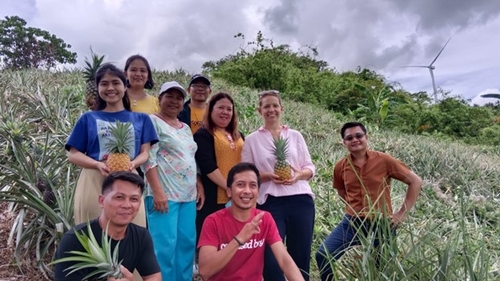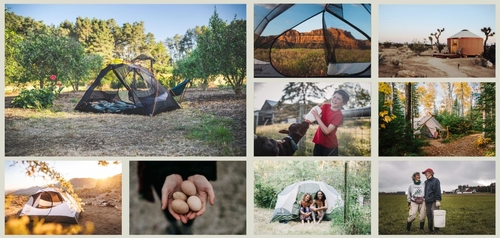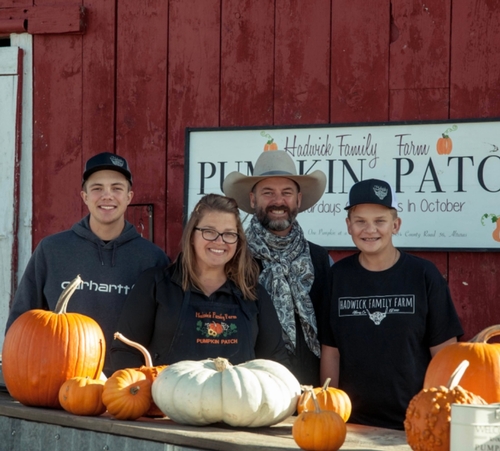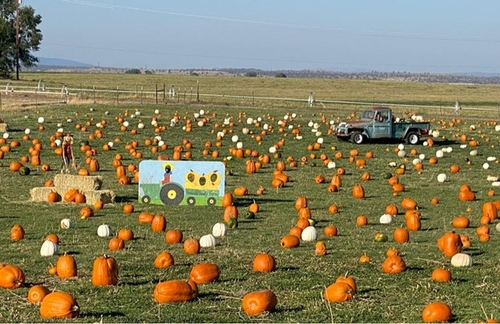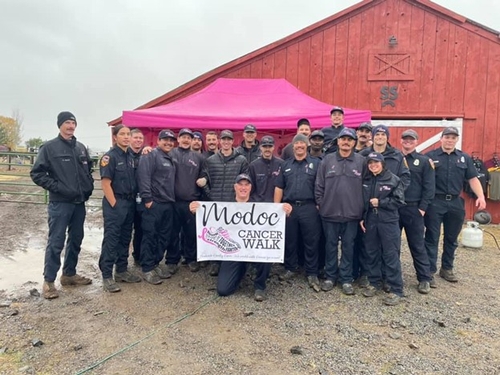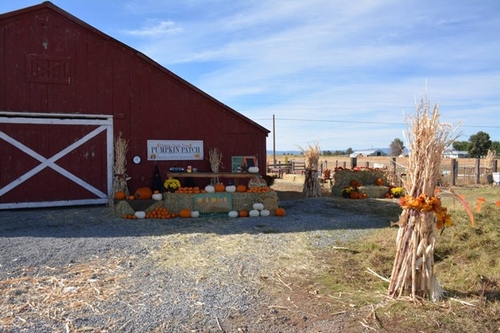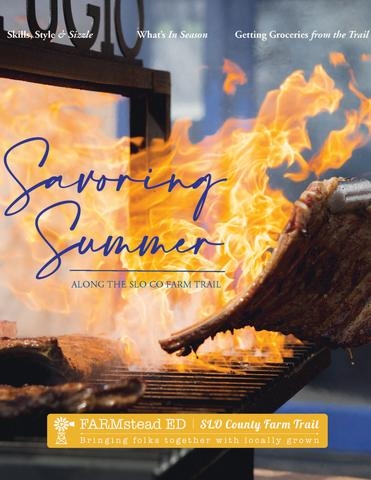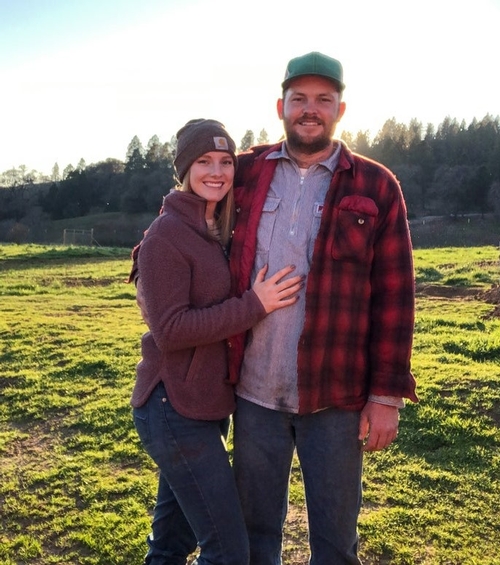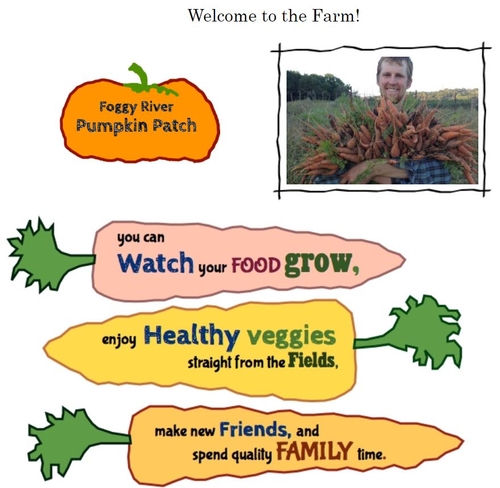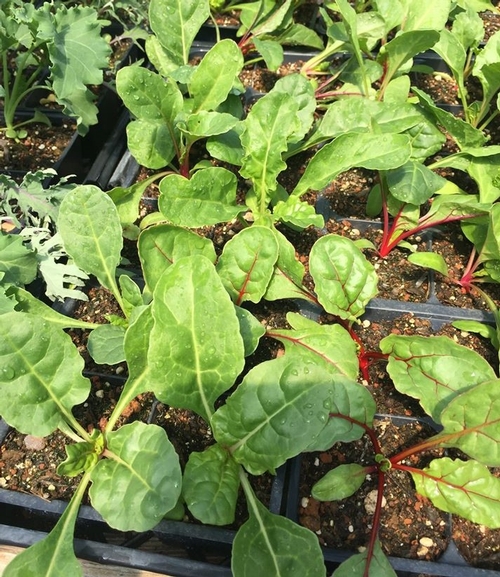
- Author: Rachael Callahan
This June, I had the opportunity to participate in a two-week USAID (United States Agency for International Development) Farmer-to-Farmer volunteer assignment in the Philippines. The program is a way for U.S. agricultural experts to share their knowledge by training farmers in developing and transitional countries.
In my role as a volunteer consultant, I was tasked with helping a community-based farmer organization, Ashon Sa Hirap, Inc. (ASHI), develop an agritourism strategy in two provinces, Laguna and Rizal, directly east of Manila on the island of Luzon.
The farmers that ASHI works with in these regions are small-scale, limited-resource, diversified vegetable farmers. The crops ranged from spring onions and bell peppers sold via a cooperative model to institutional markets, to pineapple, coconut, ube, long beans, bitter gourds, amongst others, for local markets. These farmers are extremely vulnerable to the risks of farming that have been exacerbated by climate change, including price instability, unpredictable growing seasons, and environmental disasters, such as increasingly powerful typhoons. ASHI sees agritourism as a strategy to mitigate risk by diversifying and increasing revenue for its members.

The conversations that I had with the farmers – once the ice was broken and regardless of the language barrier – told me so much about the challenges they face, their perspectives, culture, and beyond.
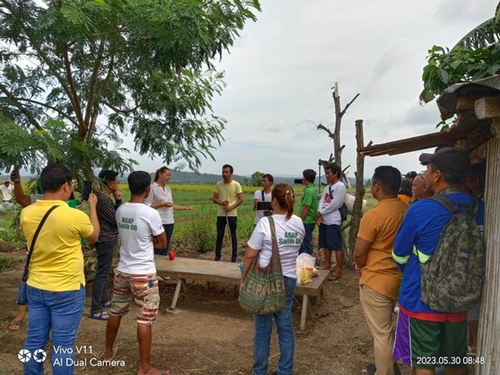
Farmers are adaptive and resourceful, so it did not surprise me that when asked what they thought about participating in agritourism, the farmers, in so many words, said “Sure, I think it's a good idea.” What did stick out to me, however, was how the farmers wanted to approach agritourism.
The majority of the farmers had no interest in developing their own agritourism business for their individual farm; instead, they wanted to create a collaborative agritourism experience with other farmers in their community. The farmers were quick to identify who has the land with the best view (for camping), who would be a good teacher (for educational activities), who is the best cook (farm-to-table meals), and so on.
Collaboration and partnerships are key to agritourism. We see this throughout California agritourism, with our farm and wine trails, and countless producer-to-producer partnerships, such as Apple Hill Growers Association, Fresno County Fruit Trail, and Sonoma County Farm Trail, to name a few. Discussing regional collaboration and shared marketing is a part of every agritourism training that I do. But what the Filipino farmers were suggesting was beyond shared marketing – they were proposing a truly communal business model.
It goes without saying that these conversations shaped the direction of the resources that I developed with ASHI, but they also helped shift the way I think about my agritourism extension efforts in California.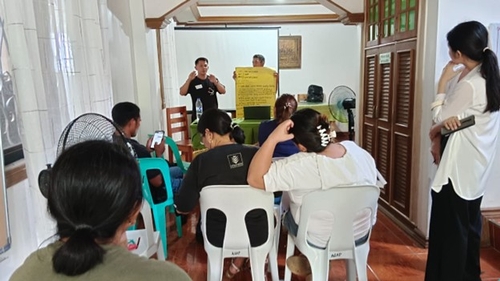
Could a communal approach to agritourism be appropriate for some small-scale California farmers? Would this increase the ability of a more diverse population of farmers to develop agritourism, use agritourism as a risk management strategy, and ultimately increase their resiliency and viability? Who am I not inviting to the table when the agritourism resources that I use are designed for individual businesses?
These are questions that I hope to explore further, in collaboration with UC ANR colleagues, trusted community-based organization partners, and farmers that don't see themselves fitting into the current model of agritourism.
While I was honored to share my knowledge and co-develop an agritourism strategy and resources that were tailored to the farmers in Laguna and Rizal, I found the experience much more of a reciprocal exchange. Not only was the experience personally enriching, I was introduced to an agritourism model that has the potential to increase accessibility of agritourism adoption by California's small-scale farmers.
- Author: Rachael Callahan
There has been an increased interest in farm-based camping, accelerated during the pandemic, from both farmers and campers. For farmers and ranchers, offering camping can be a low-barrier, low-impact way to diversify income and start or expand an agritourism enterprise. Campers can avoid overcrowded parks and connect with an area's agricultural heritage.
Many farmers and ranchers partner with a booking platform, such as Hipcamp or Harvest Hosts to connect with customers. I reached out to Hipcamp's Government and Community Relations Manager, Cassandra Prenn-Vasilakis, to get her perspective on trends and opportunities for farm-based camping and to learn more about partnering with a hosting platform like Hipcamp. Read my Q & A with Cassandra below, then check-out THIS webinar from the 2023 CA Small Farm Conference that provides an overview of how to get started with agritourism and features a presentation from Cassandra along with a panel discussion with California agritourism operators, including those that are currently offering camping.
Q & A with Hipcamp's Cassandra Prenn-Vasilakis
Q: Tell us a little about Hipcamp and how Hipcamp works with farmers and ranchers.
A: Hipcamp is the world's leading provider of outdoor stays. We partner with tens of thousands of private landowners across the United States, Canada, Australia, and the United Kingdom to create new places to get outside, opening opportunities for outdoor recreation and overnight stays on properties ranging from two-acre blueberry farms to 80,000-acre cattle ranches.
Landowners sign up with Hipcamp as “Hosts” and create an online listing that shows the area available to campers. Hipcamp Hosts can list anything from an A-frame cabin or tiny house to a tent, RV site, yurt, or glamping tent! Our community of campers will then search by location and book the stay via Hipcamp's website and mobile app. Hosts set their own pricing, availability, and rules, keep 90% of what they earn (the remaining 10% goes towards liability insurance, property protection, marketing, and 24/7 support) and are paid weekly.
More than half of the landowners who partner with Hipcamp welcome guests to working lands: farms, ranches, vineyards. Hosting campers with Hipcamp is a low-barrier and sustainable way for farmers and ranchers to diversify revenue, and the act of welcoming campers to agricultural lands provides an opportunity for education and connection with local food systems and agricultural heritage.
Q: Why farm-based camping? What are the benefits to the farmers and to the campers?
A: Camping-based agritourism is already a critical source of revenue for landowners across the country (and the world!) and became particularly important for farmers and ranchers in 2020; with wineries unable to host visitors and farms hurt by the closure of restaurants, people with working land turned to Hipcamp to make money.
We heard from many that hosting campers became their most reliable source of income during the pandemic, and many of the landowners we partner with still rely on this income to maintain or improve their properties and to offset the rising costs associated with land ownership and agricultural inputs. Fully 40% of Hipcamp Hosts use the income they earn from hosting to pay their mortgage or property taxes! Diversifying income through Hosting enables farmers and ranchers to avoid selloff and keep the majority of their property in agricultural production.
As a camper myself, I had never considered camping on a working farm or ranch before I discovered Hipcamp. And now it's my favorite kind of campsite! I've camped on vineyards along California's Central Coast and at ranches near Yosemite National Park and have found that when you visit working lands, you have an opportunity to gain an education, to get engaged with what a working landscape is, to connect with local food systems and our country's agricultural heritage. At Hipcamp, we really believe that people will be inspired to protect the places that they've experienced and feel a connection to.
We're excited to be exposing people to agricultural lands and lifestyles with the goal of inspiring the next generation of land stewards.
Q: What trends are you seeing in farm-based camping around the country and in California?
A: We are seeing more and more landowners express interest in getting started with a platform like Hipcamp and we've seen demand for camping on private land grow by 600 percent since 2019. People are looking for new and unique places to stay, camp, and get outside, and farmers and ranchers are increasingly turning to diversification opportunities like camping to keep their operations economically viable.
We've also heard from Hipcampers that being able to buy products grown and made on the property (meat, veggies, yarn, eggs) can be the difference between a good experience and an unforgettable one.
Hipcamp has a tool that we call “extras'' that enables landowners to list items and experiences for campers to add to their bookings. Campers may choose to purchase goods while they are physically on the property, but booking and paying ahead of time can make it easier for folks. Our most popular “extras” are farm fresh eggs, and one of the best selling experiences offered in recent years was a class called “Beekeeping 101.” I think people really appreciate being able to learn about and connect with the place they're staying.
Q: What do you think accounts for this trend?
A: This trend isn't entirely surprising! Camping-based agritourism enables farmers and ranchers to diversify revenue while taking pressure off of our public lands and creating new places for people to stay, camp, and get outside. It also has a lower barrier to entry than some other agritourism activities or visitor accommodations; you don't need much infrastructure to get started, and you can always invest in and grow your offerings depending on the needs of your business at different times.
On the camper side, we've seen demand for the outdoors really take off over the past few years and trend reports show that overcrowding is really impacting peoples' ability to experience and enjoy outdoor recreation. Camping on a farm offers a new way to get outside and enjoy an area, away from the crowds. It also offers campers an opportunity to support a farmer or rancher, buy locally grown produce, and spend their money in a way that aligns with their values.
Q: What are the opportunities and challenges that you see for farmers and ranchers that are offering farm-based camping or interested in doing so?
A: I think camping-based agritourism is an exciting opportunity for farmers and ranchers who are looking for a low-impact way to diversify while keeping the majority of their land in agricultural production. Agritourism also helps get the word out about a farm, increasing on-site sales by bringing in more visitors who purchase goods directly from the farm and giving farmers and ranchers the opportunity to educate the public about what's happening on their land and the importance of getting to know and support your local farmer.
While camping-based agritourism is an exciting option for farmers and ranchers, it's important to consider how hospitality fits into the responsibilities you already have on your farm and what your capacity is to take more on. It's also important to do your research and ensure you understand what regulations and permitting requirements may apply to your hosting and agritourism activities before you get started.
Q: What benefits does partnering with a platform like Hipcamp provide to farmers? To the campers?
Hipcamp offers calendar management tools, liability insurance, and property protection. We help Hosts collect the appropriate taxes, offer 24/7 support, and share the properties listed on our platform with a global community of outdoor enthusiasts who are looking for new and unique places to stay, camp, and get outside. We also offer safety tools like weather alerts powered by the National Weather Service and have a fire ban tool that Hosts can use to share safety information with their campers.
For campers, Hipcamp connects them with properties that they might not otherwise have known about or been able to stay at. We make it easy to find the experience you're looking for all in one place, whether you're looking to book a glampsite, pitch your tent on a working farm, find an RV site at a commercial campground, or learn more about your local state park. There's something for everyone on Hipcamp! We also make information and data available to our campers for free that can make it easier for them to decide where to go: whether you want to know if you'll have cell service, are looking to camp in a dark sky community, or want to stay just outside of your favorite National Park, that information is all available on Hipcamp.
Q: What is your advice for farmers and ranchers hosting campers?
A:
- Start small! You don't have to have a fancy set up to be a successful Hipcamp Host and you can always invest in and grow your offerings as you go.
- Do your research to ensure your hosting activities are compliant with local and state laws. We recommend thinking about where your property is located and how it's zoned, as well as what you're interested in doing on your property (tent and RV sites might be regulated differently than a cabin, for example).
- Be a good neighbor. Consider who might be impacted by your hosting people on your property before you welcome your first guest. This might be someone you share a private road with or someone who can see your property from their kitchen window.
- Set expectations. More information is always better and campers will appreciate knowing what to expect before they arrive. Think about what they'll see and hear from their campsite, for example. Do you have a rooster that crows early in the morning? A livestock guardian dog that keeps the farm safe at night? Use your Hipcamp listing to let them know what camping on a farm is like, what products they might be able to buy on site, whether you'll be available to show them around, etc.
- Have fun!
Thank you to Cassandra Prenn-Vasilakis for participating in the Q&A. This interview is informational, not an endorsement of Hipcamp. All images courtesy of Hipcamp
Webinar: How to get started with Agritourism (from the 2023 CA Small Farm Conference)
- Author: Rachael Callahan
In 2016, Heather and Bryon Hadwick attended the Agritourism Intensive training, a signature course of the UC ANR Agritourism Program. Heather had been wanting to start a pumpkin patch, Bryon wasn't so sure. When they learned that an Agritourism Intensive was coming to Redding, they saw an opportunity to learn more about what it would take to start an agritourism enterprise and hear from experienced agritourism operators. Six years later, the Hadwick Family Farm Pumpkin Patch has become an October tradition for families from Modoc County and beyond and a launching pad for community engagement and education.
They knew it wouldn't be easy, and it hasn't been. To start, Heather and Bryon both work full-time off-farm jobs. They designed the business to be manageable part-time by the two of them with help from their children, who are now teenagers. Having enough time is only one of their obstacles; they also have to contend with insurance limitations and unpredictable weather. As with all agritourism operations, liability is a major concern. The Hadwick's only found a few insurance companies nationwide that would cover a pumpkin patch. In many ways, the activities that they offer at The Patch, as it is commonly called, are dictated by the insurance costs. For example, they wanted to offer tractor rides, but they would have to charge far more than they were comfortable with to offset the increase in insurance costs.
And then there's the weather. The pumpkin patch is open 3 to 4 weekends a year in October. Modoc's unpredictable weather makes it nearly impossible to project the season's earnings in advance. October has brought snow, rain, and 80-degree weather. Last year, in 2021, they were rained out every single weekend. While enough visitors showed up in their rain gear to keep the business from losing money, the experience made them question whether or not they wanted to keep it going. They moved forward with opening again in 2022, welcoming more visitors on opening day than the entire 2021 season.
Navigating business decisions amongst the limitations and uncertainties of time, insurance, and weather is no doubt challenging, but clear goals and metrics to monitor progress towards reaching those goals have helped guide the Hadwicks. Community is The Patch's founding principal. As Heather puts it, “We see the pumpkin patch as more of a community service. As long as we are in the black, we're good and will keep it going.”
The pumpkin patch itself is geared towards local families, with a keen eye on keeping prices accessible. For the first time this year, pumpkin prices were raised to offset the business's rising operating costs (for one thing, the cost of their insurance doubled this year). Entry remained $5 and includes all activities. Part of these proceeds are donated back to their local FFA chapters. “Our goal is to keep it at $5. We want it to be affordable, most families spend 2 or 3 hours at the Patch.” Heather adds, “There isn't a lot you can do these days for that long for $5 a person.” So when it comes to adding activities like tractor rides that would raise the cost too much for local families, the Hadwick's opt to keep things affordable.
In addition to keeping prices as low as possible, The Patch frequently lends their space to community groups and partners with local businesses. Floral arrangement classes, facepainting at the farm to promote a new cosmetologist business, cancer awareness walks, and frequent collaborations with the local FFA are a few examples of how the Hadwick's use their space to support community efforts and provide agricultural education. Hadwick Family Farm also hosts field trips for schools from Modoc, bordering counties and Oregon schools.
While community collaborations are in line with their business's mission, it also helps with getting the word out, saving them money on marketing. “We are mostly word of mouth. We've tried different advertising venues and word of mouth and social media seem to work the best for us,” according to Heather.
In 2021 and 2022, the UC ANR Agritourism Program partnered with UC Cooperative Extension Modoc County and local nonprofit Modoc Harvest to hold a series of workshops, funded by a USDA Farmers Market Promotion Program grant, for area farmers and community members to explore agritourism opportunities and generate interest in expanding Modoc's agritourism offerings. To supplement a workshop about hosting on-farm events, Hadwick Family Farm Pumpkin Patch hosted their first farm-to-table dinner as a fundraiser for Modoc Harvest. With little agritourism, such as on-farm events, taking place in Modoc County at present, the county does not have a framework for regulating activities, other than the statewide guidelines for farm stands and farm stays. As interest in starting agritourism enterprises increases in Modoc County, UCCE Modoc County and the UC ANR Agritourism Program will work with county regulators and other stakeholders to develop guidelines that clear a path for farmers and ranchers that are interested in expanding their offerings.
In agritourism it is often beneficial to have multiple agritourism enterprises within close proximity that can collaboratively market their businesses and attract a greater number of visitors. Hadwick Family Farm Pumpkin Patch provides a look at an operation that has achieved success by marketing to their local residents and creating community partnerships in the absence of an agritourism network.
In regions like Modoc County that do not have a developed agritourism industry, businesses like Hadwick Family Farm Pumpkin Patch, can serve as proof of concept for the potential viability of agritourism. The Hadwick's success, challenges, and insights can help inform other potential agritourism operators in the area as well as regulators. By taking a chance on opening the only pumpkin patch, and one of the only agritourism operations, in 100 or so miles, the Hadwick's are engaging and educating their community, and possibly leading the way for agritourism in Modoc County.
- Author: Rachael Callahan
Many farmers and ranchers list marketing their agritourism operation as one of their biggest challenges. Groups that support agritourism in their region, such as farm trail organizations, play a critical role in promoting local farmers and ranchers, using collective marketing to uplift the entire area's agricultural offerings. Here we highlight two farm trails' creative and collaborative approach to marketing their members this year.
The 2021 summer edition of edible San Luis Obispo included a 12-page insert Savoring Summer Along the SLO Co Farm Trail, highlighting the region's bounty from farm to table. The insert, produced by FARMstead ED/SLO Co Farm Trail is an informational and celebratory guide to the region's products, producers, and agritourism experiences. Lynette Sonne, founder of FARMstead ED, was inspired by Nevada County's Food and Farm Guide, but FARMstead ED was not in the position to publish its own full-length magazine, so Sonne approached Gail Cayetano, owner of edible SLO, a publication with a history of supporting and uplifting local farmers. Cayetano encouraged FARMstead ED to put its resources towards developing an insert, leveraging edible SLO's circulation while telling FARMstead ED's own story.
The result of this collaboration was a win all around. Sonne remarks, “As the saying goes, we are stronger as a herd, than individuals. Collectively, we showcased nearly 40 local businesses. The investment to create a marketing piece of this caliber is out of reach for most of these businesses budgets, so collaborating and cross-pollinating together with this high quality magazine shines a light on them, creating an opportunity for exposure of their products to 10,000+ print distribution and many more times via web, that they may not have had otherwise.”
The Savoring Summer Along the SLO Co Farm Trail insert is just one (high impact) example of collaboration – a concept that seems to be foundational to the agricultural community in San Luis Obispo county. According to Sonne, “Our partners are masterful in what we call cross-pollinating. They reach out to each other to gain ingredients and knowledge to create even more locally made products. Those who make body care products include local EVOO, honey & flowers and we couldn't grow our own cocktail garden without herbs & fruits.” For farmers and supporters alike, collaboration is invaluable. For many farm trail organizations, collaboration not only builds community, it is a necessity to achieve their missions with limited resources.
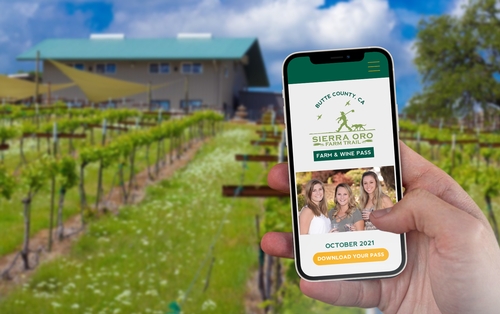
Another safety-minded change that SOFT made this year is extending the pass from just one weekend to the whole month. Johansson is hoping that offering the pass for the month will spread people out, which will limit crowds and make welcoming them easier for farmers, many of whom are experiencing staffing difficulties. SOFT has turned concerns over safety into an opportunity, encouraging visitors to ‘Go at your own pace' as they ‘Tour. Taste. Toast!' throughout Butte County.
Agritourism operators in Butte are excited to welcome back visitors with the month long farm and wine pass. “This kicks off the holiday season for us. It is a Christmas preview, visitors can shop for holiday gifts from the farms and vineyards while they are here.” And if they don't get to do all the shopping that they want during October, Johansson will be in touch with them to purchase one of the tasting boxes full of local products that SOFT compiles for holidays and special occasions – another way in which the organizations not only markets, but generates revenue for their members.
Thank you to FARMstead ED and Sierra Oro Farm Trail for the work that you do to uplift your agricultural communities and for letting us share your stories.
- Author: Rachael Callahan
- Author: Cooper Limon
Partnering for California
The COVID-19 pandemic hit farmers hard. Supply chains were disrupted and even non-traditional agritourism revenue streams such as hay mazes and on-farm events had to be canceled due to shelter-in-place mandates.
On the other hand, demand for local farm products skyrocketed, and thus many farmers and ranchers needed a quick pivot strategy and a set of new skills.
UC Sustainable Agriculture Research and Education Program (SAREP) was well-positioned to support this shift toward direct sales, pulling in trusted community partners and experienced farmers and ranchers to put together a comprehensive webinar series, “Agritourism and Direct Sales: Best Practices in COVID Times and Beyond”.
Funded by a USDA Farmers Market Promotion Program (FMPP) grant, the webinar series is part of a three-year project, Strengthening California Local Food Networks with Agritourism and Direct Sales, which provides trainings and technical assistance to farmers and ranchers on how to diversify their revenue streams.
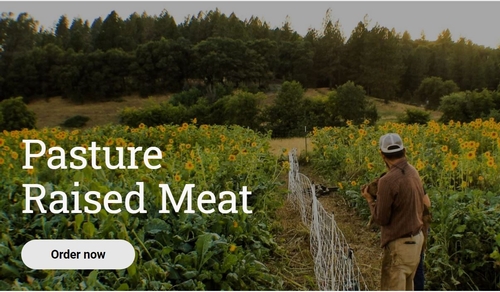
The strength of the series, which includes eight webinars that were recorded earlier this year and are available online, lies in the collaborations among the UC SAREP Agritourism Program, UCCE, community groups, and farmers and ranchers.
The series features a range of speakers, including representatives from community organizations, technical experts, academic researchers, and farmers – all coming together to build resilience and adaptability for small-farming operations and the agritourism industry across California during the pandemic and after.
“It's great to collaborate with other organizations and regions, to learn from each other and to broaden our networks, as we are all working to create more resilient and sustainable food systems,” said Carmen Snyder, executive director of Sonoma County Farm Trails, one of the nonprofit partners on this project.
And because of those strong partnerships, the webinar topics reflected the on-the-ground needs facing agricultural producers.
“COVID initially dramatically affected farmers' restaurant contracts, with many losing more than 80% of their accounts overnight,” Snyder said. “CSAs [Community Supported Agriculture], on the other hand, couldn't keep up with the demand, and all of our CSA members were full and had wait lists for the first time ever. Producers pivoted by creating more online stores, including pick-up and delivery options. It was a challenge for them to navigate the new technology and platforms.”
Unsurprisingly, two of the more popular webinars were “Online Sales Options and Methods” and “Safe, Healthy and Successful Farm Stands”.
The “Online Sales Options and Methods” webinar, a partnership with the Community Alliance with Family Farmers (CAFF), provided an overview of several e-commerce marketing and online sales strategies that farmers can implement to diversify their revenue pathways and reach new customers. CAFF stressed the importance of farmers enhancing their resiliency through e-commerce.
The webinar also featured Ciara Shapiro, the owner of AM Ranch in Penn Valley, who shared her experience with online marketing and how it helped her and her husband survive the pandemic when the restaurants and farmers markets they sold to shut down. This personal and informative webinar demonstrated the effectiveness of online sales and marketing, while highlighting available resources from groups like CAFF.
The “Safe, Healthy and Successful Farm Stands” webinar was aimed at farms of all sizes and organizations that operate or advise agricultural operations using farm stands as a form of revenue. The webinar provided an outline of the rules and regulations that farm stand operators needed to follow during COVID – as well as during business-as-usual times.
It featured two guest speakers who run successful farm stands: Emmett Hopkins, the owner of Foggy River Farm in Sonoma and Reyna Yagi, the farm manager at Petaluma Bounty Farm. They shared their experiences during COVID and how they had to pivot to remain profitable and accessible within state guidelines.
Both farmers saw an increase in farm stand business during the pandemic, which Yagi attributed to the “traffic storm of people” who attended their annual plant sale fundraiser and came to participate in new farm outdoor activities and volunteer opportunities. Yagi also noted the growing number of low-income individuals who were unable to access fresh produce during the pandemic.
The speakers' shared experiences running successful farm stands gave audience members tangible examples and real-time information on how to incorporate farm stands into their businesses.
Carmen Snyder of Sonoma County Farm Trails, which helped circulate the recorded webinars to their network of farmers and ranchers, remarked: “these webinars were extremely helpful for local producers, to get clarity on best pandemic practices during these challenging times and to learn how other producers are adapting and navigating the circumstances.”
